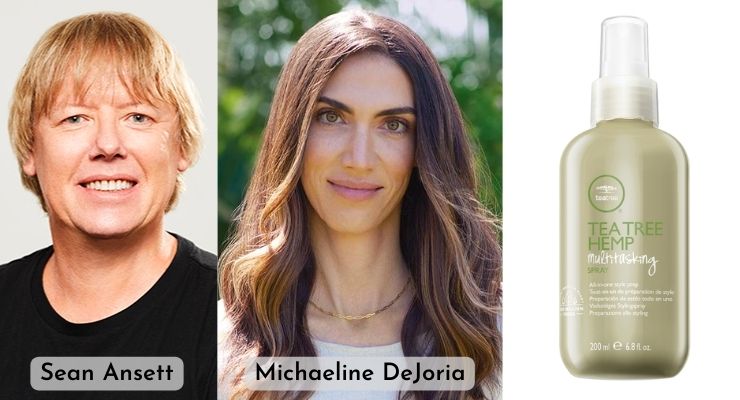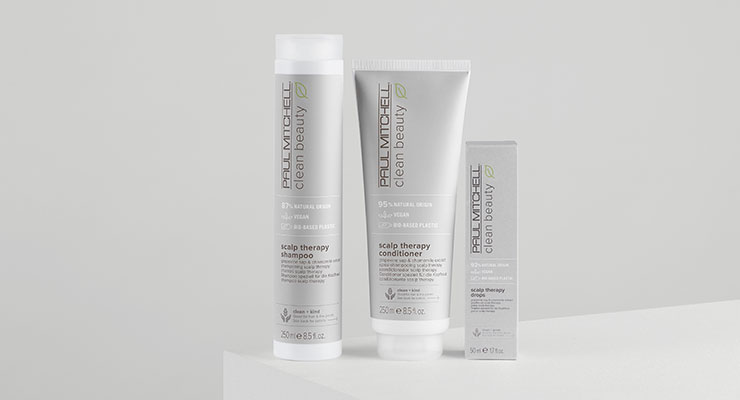Jamie Matusow, Editor-in-Chief04.26.23
At hair care dynamo brand John Paul Mitchell Systems (JPMS), sustainability has been a key initiative, and the company has invested heavily in various efforts. Earlier this year, Michaeline DeJoria, the company's CEO, announced that she had named a high-level global expert—Sean Ansett, as Senior Director of Sustainability.
Prior to founding some of his own ventures, Ansett held executive roles in corporate responsibility with Apple, Gap Inc., Burberry and Fairphone. He has decades of experience in global sustainability leadership, which spans across apparel, electronics and consumer products.
Beauty Packaging’s Jamie Matusow recently had the opportunity to ask DeJoria and Ansett about the brand’s sustainability mission, achievements and plans for the future.
A Q&A with Execs from John Paul Mitchell
BP's Jamie Matusow: Why is sustainable packaging so important to the beauty and hair care industries?
Sean Ansett: Sustainable packing is critical to the beauty and hair care industries so companies can avoid contributing to continued environmental degradation by working with raw materials that have a low environmental impact, use less materials/resources, and that can either be reused or recycled. Surveys suggest that consumers’ expectations are changing, and they are aware of the potentially damaging impacts of synthetic packaging on ecosystems and planetary health.BP: Why was it important for JPMS to create this new role?
Michaeline DeJoria: When I stepped into the role of CEO, I knew right away that one of our key initiatives would be to invest in sustainability however we can.Given how closely sustainability ties to innovation, I wanted to bring in an expert who could thoroughly assess every aspect of our company operations—from sourcing, to manufacturing, to shipping—and create a short- and long-term strategy to make JPMS a more sustainable company.
As our Senior Director of Sustainability, Sean Ansett brings the extensive experience and solution-oriented mindset that is perfect for our needs.
BP: How did you develop your passion for sustainability—and why do you focus your efforts on packaging?
MDJ: Sustainability has always been a huge part of the heart of JPMS, and it’s a value I was raised with by my father, who co-founded the company.Our goal is to make the world better in any small or large ways we can, whether it’s to reduce our plastic use, create less trash going into the landfill, or minimize our carbon footprint.
Packaging is one area where the innovations have progressed quickly in a short period of time. We are committed to constantly researching new ways to implement these innovations into our packaging. It’s one of the reasons we joined SPICE, the Sustainable Packaging Initiative for Cosmetics
BP: What are your achievements/plans for sustainable packaging at JPMS—and how do you envision sustainability in the beauty industry moving forward?
SA: We have ambitious packaging goals, including converting plastic packaging to 75% post-consumer recycled materials for our Paul Mitchell and Tea Tree lines by 2025 and it’s our ambition to exceed that goal.We know that some of our biggest environmental impacts are in the manufacturing of packaging materials and that our design choices have consequences. The conversation is already taking place, and it will reduce our carbon usage, virgin plastic use, and water footprint across our business. We will continue to explore new materials from natural sources or that degrade in landfill or industrial composting facilities.
We believe that there will be more industry pre-competitive collaboration going forward, like the SPICE initiative we joined in 2022, where 25 corporate members from the beauty and cosmetics industry will help to scale sustainable packaging initiatives and reduce the negative impact on the planet.
Increased data-driven decision-making will become the norm when designing packaging and formulations to ensure that material and ingredient choices minimize GHG emissions, water footprint, and contribute to heathy biodiversity. Certainly, refillable and low water formulations are also on the rise.
BP: Are there any tips that you can share with brands that don’t have a full-time sustainability expert on-hand?
MDJ: My best advice to brands looking to become more sustainable is to be passionate and unwavering in their efforts. Tackle the smaller, simpler challenges first, and then move on to bigger initiatives. Do plenty of research—there’s a ton of expertise available on how to be more sustainable. And be persistent! You may not find the solution immediately, but things evolve rapidly, so a good option could be around the corner.BP: What are the most critical steps for a beauty brand to take regarding sustainable packaging?
SA: It all starts with design, as design dictates the entire supply chain, from the materials used, to the sourcing markets, to how the consumer will use the product and what waste stream the packaging will go into at the end of its useful life. Beauty brands should:Consider the whole lifecycle of product packaging, from material extraction to the end-of-life stage. They may conduct, as needed, a lifecycle assessment (LCA) to determine the actual impact of the packaging and make data-driven decisions, not only for making claims but to ensure sustainability performance.
Set sustainable packaging targets and demonstrate year over year improvements during their transition, rather than following the next sustainability fad. Carefully assess the environmental and social impacts of their packaging choices.
Be willing to compromise on the packaging aesthetic to drive sustainable change. On our Tea Tree Hemp Restoring Shampoo & Body Wash packaging, we introduced the consumer to the new aesthetic of the 100% post-consumer recycled bottle by communicating that the packaging was ‘purposefully imperfect.’
BP: How else do you make consumers aware of what JPMS is doing sustainable packaging-wise. And—are you seeing more interest in sustainable packaging from consumers?
MDJ: Our marketing efforts and digital activations are the primary ways we communicate our sustainability efforts to consumers. We have an entire section of our website dedicated to being transparent about our efforts and where we are making changes.Additionally, we work with Green Circle Salons, an organization that provides sustainable waste management that can prevent up to 95% of salon beauty waste from ending up in landfills, to show consumers and salons that it is possible to be sustainable at all levels.
BP: What is still the greatest barrier to a truly sustainable package?
SA: There are many barriers to a truly sustainable package, including the packaging’s compatibility with formulations, its shelf life, and the water barrier the packaging provides when our customer uses it in the bath, shower or salon.Another challenge is the lack of recycling infrastructure in the U.S. and other countries around the world. You can have a package that is designed to be recycled, but whether it actually is recycled is another story. Some municipalities don’t provide access to material recovery facilities or recycling systems, and the type of materials that can be recycled varies across recycling centers.
For industrial compostable materials, there are even fewer options for composting of the product and unfortunately many end up in the landfill. We need more industrial composting facilities to come online as we move into bio-based materials.




